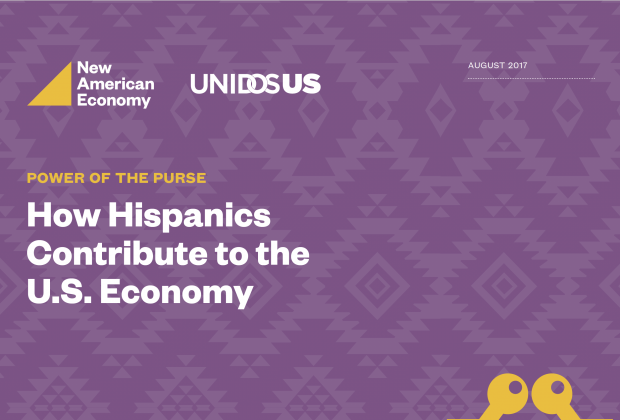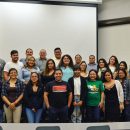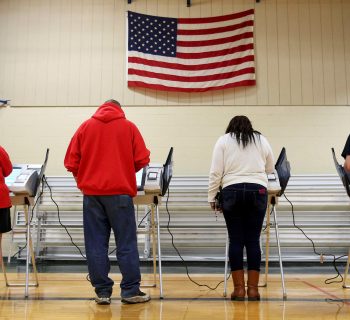August 2017 Report by UnidosUS and New American Economy.
Download the full report here.
Executive Summary
There are few groups more important to the health of the U.S. economy overall than Hispanics. In 2015, they made up one out of every three agriculture workers in the United States. They also accounted for more than one in four workers in construction and more than one out of every seven of the country’s entrepreneurs.
Their high level of workforce participation has helped make them such a force in our economy. Rapid growth in the number of Hispanics in the country as a whole in recent decades has made them more widely represented too. Between 1970 and 2014, the number of Hispanics living in America grew by a factor of roughly seven—or by 592 percent. The overall U.S. population increased by just 56 percent during the same period. Beyond workforce contributions, it is important to have a clear picture of the many other ways that Hispanics strengthen the U.S. economy. There are many ways someone can contribute to the U.S. economy and spur productivity growth. He or she might fill a job that would otherwise likely remain vacant, allowing a U.S. company to continue to expand, innovate, and hire more workers. She can pay taxes to state and local governments, supporting public schools, police forces, or other vital services. Or he can participate in our economy simply as a consumer, buying the goods and services like groceries, clothing, and home improvements that allow U.S.-based businesses to thrive.
While, Hispanics—both at the national and state levels—are an integral part of the U.S. economy, they tend to lag behind in several other critical economic indicators.4 Their median household income, for instance, is roughly 25 percent lower than U.S. households. Additionally, in the first quarter of 2017, Hispanics ages 16 and above had an unemployment rate 1 percent higher than the national average. These long-standing inequities not only affect individuals and families in the Hispanic community but can have a significant effect on the strength of the U.S. economy. In this research brief—part of a series from New American Economy (NAE) on the economic contributions of immigrants—we shed light on how the Hispanic population, both foreign-born and nativeborn, is enriching our economy on each of these fronts. Using the 2015 American Community Survey (ACS) from the U.S. Census Bureau, we examine data on the 56.5 million Hispanics in America—detailing how much they earn each year, their spending power, and the amount they contribute as taxpayers. We also detail their entrepreneurship patterns and where they are making an impact as voters. Although this population is largely made up of U.S. citizens—a full two-thirds of Hispanics in the country were born here—we also break out data on the 19.4 million Hispanic immigrants building lives in America.







